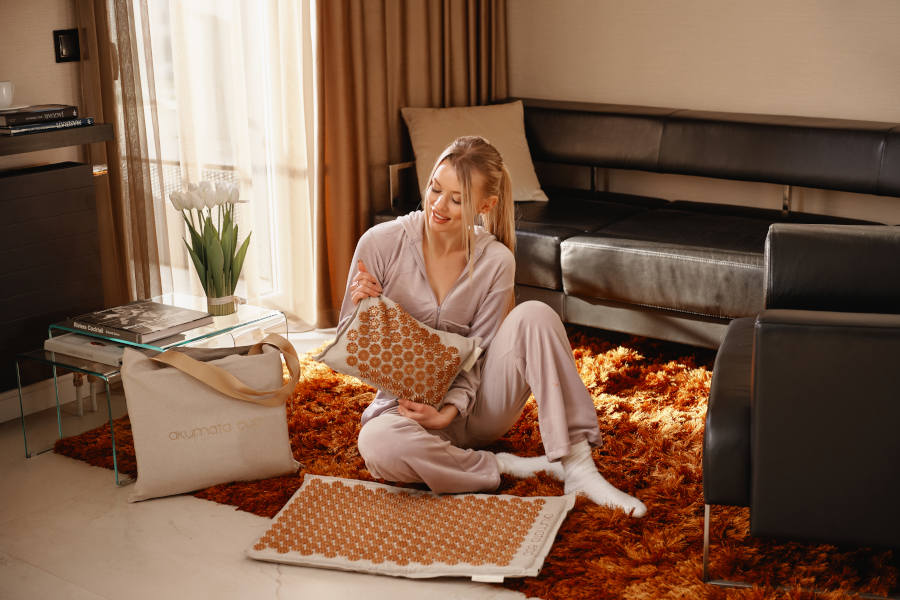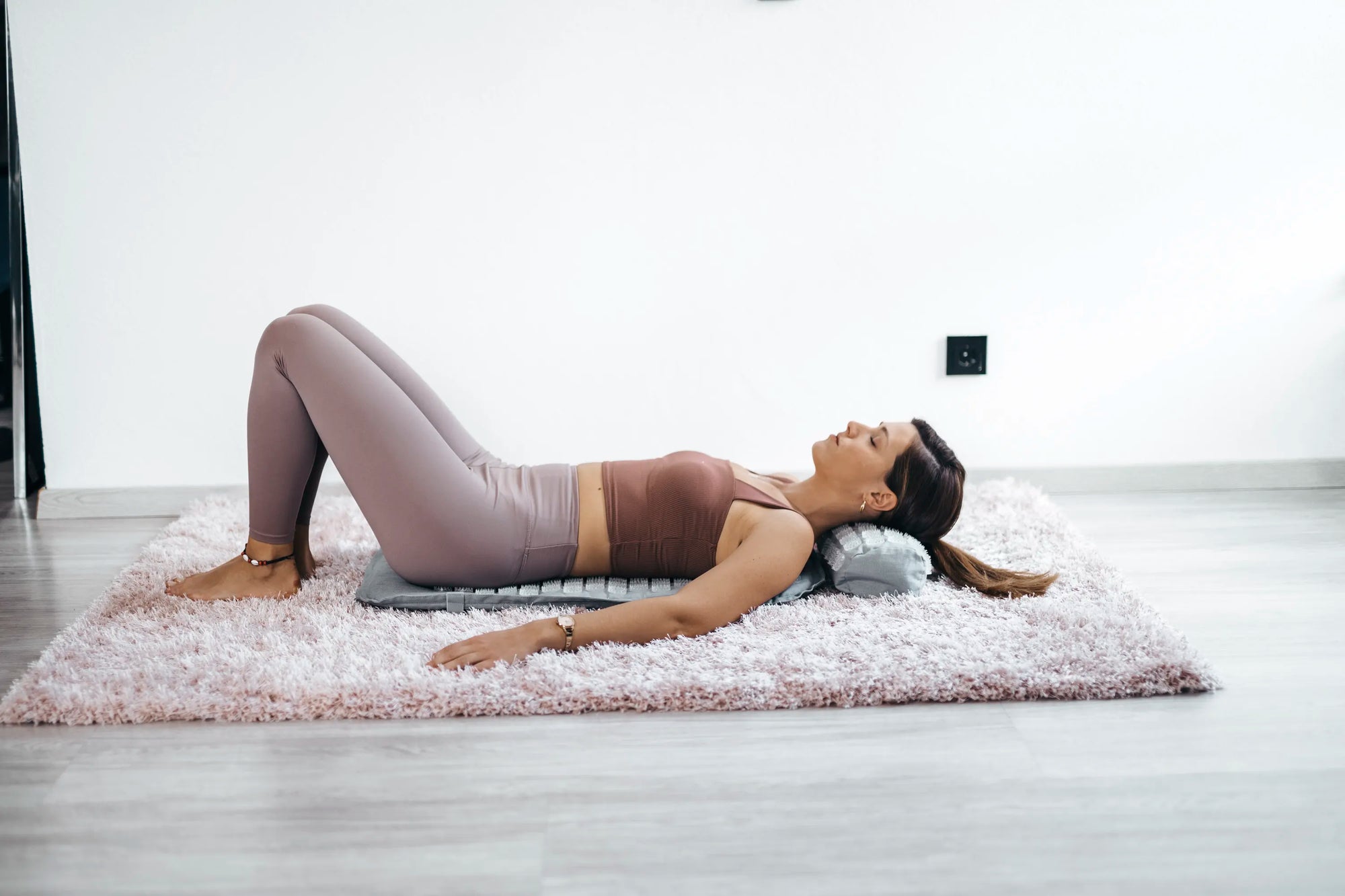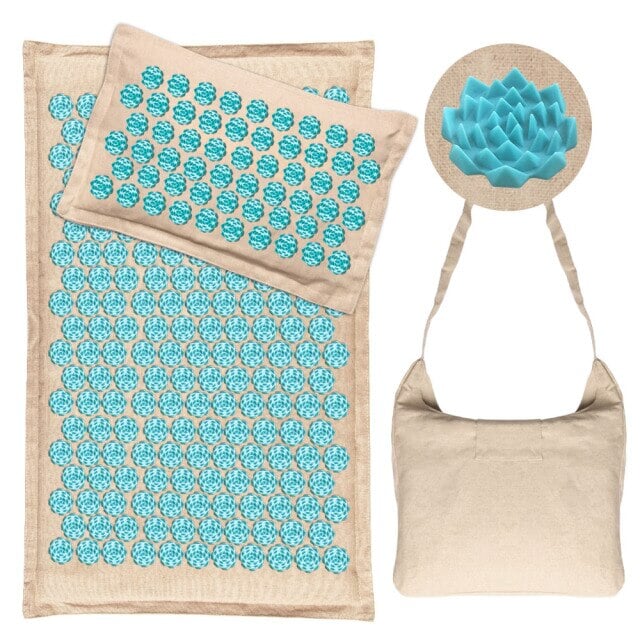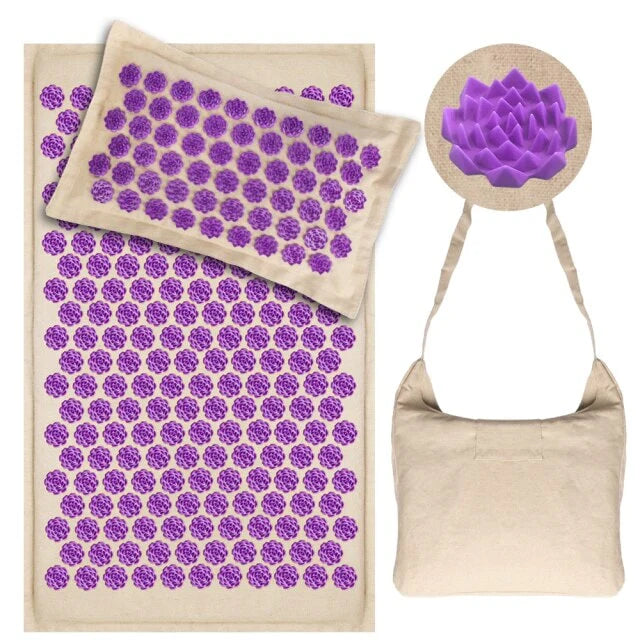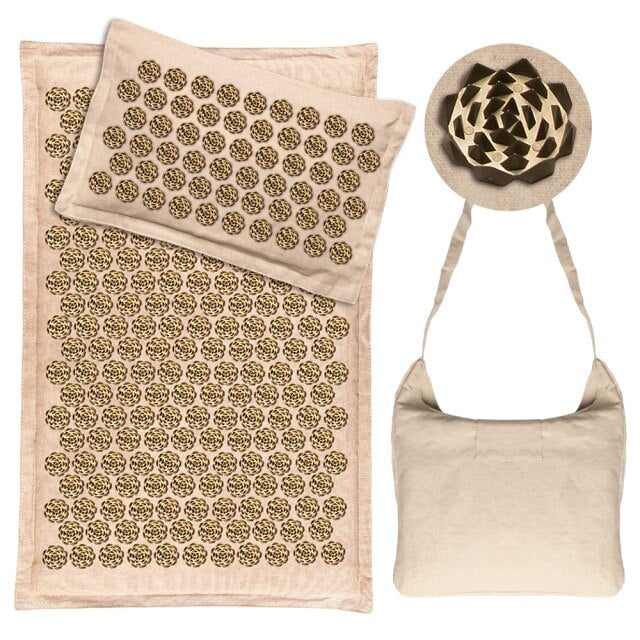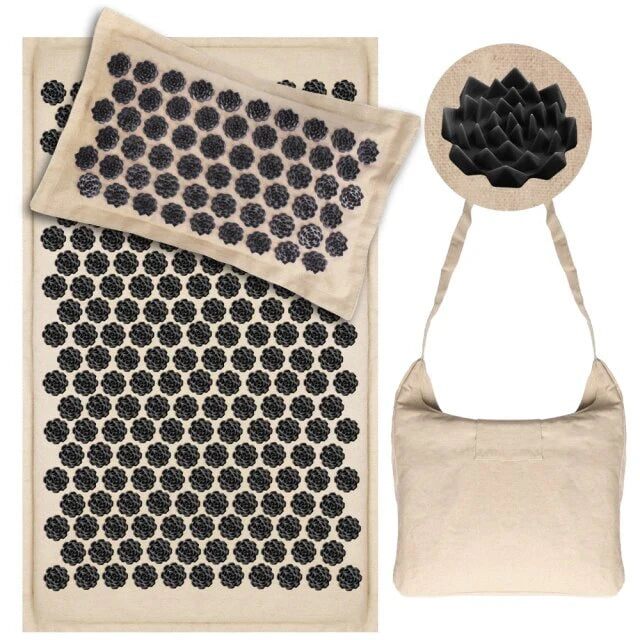L'acupression est-elle réelle ? Décryptage des mythes et des sciences
L'acupression est souvent perçue comme une pratique de guérison mystérieuse, ancrée dans la médecine traditionnelle chinoise (MTC) . Malgré son utilisation répandue, nombreux sont ceux qui remettent encore en question sa légitimité et son efficacité. Cette pratique ancestrale consiste à appliquer une pression sur des points spécifiques du corps, appelés points d'acupuncture, censés stimuler la circulation de l'énergie vitale.
Cet article explore si l'acupression est une pratique réelle et scientifiquement validée ou un simple effet placebo déguisé. En examinant ses origines historiques, ses mécanismes, ses bienfaits avérés et les idées reçues, nous souhaitons apporter une compréhension claire de l'acupression et de son impact potentiel sur la santé et le bien-être.
Qu'est-ce que l'acupression ?

Définition et origines
L'acupression est une technique de guérison ancestrale, issue de la médecine traditionnelle chinoise (MTC) il y a des milliers d'années. Elle repose sur la théorie de l'énergie vitale, appelée Qi, qui circule dans le corps humain par des canaux appelés méridiens. L'acupression consiste à appuyer sur des points d'acupuncture spécifiques avec les doigts, les pouces ou des instruments spécifiques pour rétablir l'équilibre entre les forces Yin et Yang du corps.
Contrairement à l'acupuncture, qui utilise des aiguilles, l'acupression applique une force manuelle pour traiter diverses affections. Cette méthode non invasive reste populaire dans de nombreux pays asiatiques, dont la Chine, et est reconnue comme une médecine complémentaire et alternative (MCA) .
Les bases des points de pression
L'acupression repose sur le principe selon lequel le corps possède des points spécifiques reliés aux organes et systèmes internes par des voies appelées méridiens. Ces méridiens véhiculent la force vitale, essentielle au maintien de la santé selon les praticiens de la MTC.
Appliquer une pression profonde sur ces points, par exemple en appuyant avec le pouce sur le point « Hegu » de la main ou sur le point « Neiguan » du poignet, contribue à améliorer la circulation énergétique. Des recherches suggèrent que la stimulation de ces points d'acupuncture peut soulager efficacement des symptômes comme la douleur, le stress et l'insomnie.
Comment fonctionne l’acupression ?

La science derrière l'acupression
La recherche moderne propose plusieurs explications scientifiques au fonctionnement de l'acupression. Une théorie suggère que la stimulation de points d'acupuncture spécifiques active les voies nerveuses , entraînant la libération d'endorphines, des analgésiques naturels. De plus, l'acupression pourrait améliorer la circulation sanguine, contribuant ainsi à soulager les tensions musculaires et à favoriser la guérison.
Les chercheurs en acupuncture médicale ont étudié l'efficacité de l'acupression pour réduire les nausées et vomissements postopératoires, en particulier chez les patients opérés. Bien que les explications traditionnelles ne concordent pas toutes avec la science moderne, des études fondées sur des données probantes continuent de valider les bienfaits de l'acupression.
Perspectives traditionnelles et perspectives modernes
En médecine traditionnelle chinoise, l'acupression est censée rétablir l'équilibre énergétique du corps, favorisant ainsi l'harmonie entre le corps et l'esprit . Cependant, du point de vue médical moderne, l'efficacité de l'acupression est souvent attribuée à son impact sur le système nerveux et les réponses biochimiques.
Par exemple, appuyer sur des points d'acupuncture peut déclencher des réactions neurochimiques réduisant la douleur et le stress. Ce contraste entre les croyances traditionnelles et les découvertes scientifiques met en évidence l'évolution de la compréhension de l'acupression en pratique clinique.
Quels sont les bienfaits prouvés de l’acupression ?

Soulager la douleur et l'inconfort
L'acupression a été largement étudiée pour son potentiel à soulager la douleur et l'inconfort. Les recherches montrent qu'elle peut réduire efficacement l'intensité des maux de tête, des crampes menstruelles et des douleurs lombaires.
Une étude publiée dans le « Journal of Pain Management » a révélé que les patients ayant bénéficié de séances d'acupression ont constaté une réduction significative de la douleur par rapport à ceux ayant bénéficié de soins standard. Cette technique offre une alternative prometteuse pour les personnes cherchant à soulager leur douleur sans recourir aux médicaments.
Soulager les nausées et l'anxiété
L'acupression est fréquemment utilisée pour lutter contre les nausées , notamment en cas de chimiothérapie, de grossesse et de convalescence post-opératoire. Des études montrent qu'appliquer une pression sur le point d'acupuncture Neiguan (P6) du poignet contribue à réduire les nausées et les vomissements. Pour les femmes enceintes, l'acupression offre un moyen sûr de gérer les nausées matinales.
Au-delà des symptômes physiques, l'acupression a démontré son potentiel pour réduire l'anxiété et améliorer la santé mentale. Pendant la pandémie de COVID-19, l'acupression a été utilisée comme traitement efficace pour soulager les symptômes d'anxiété chez les personnes concernées.
Mythes et idées fausses courants

Démystifier les mythes sur l'acupression
L'une des idées fausses les plus répandues concernant l'acupression est qu'elle ne fonctionne que grâce à l'effet placebo . Si cet effet peut influencer les résultats, de nombreuses revues systématiques ont montré que l'acupression a des effets physiologiques mesurables, tels que des modifications du rythme cardiaque, de la tension artérielle et du taux de cortisol.
Un autre mythe veut que l'acupression soit un remède miracle pour tous les maux. En réalité, l'acupression est une thérapie de soutien, à utiliser de préférence en complément des traitements conventionnels. Des essais cliniques continuent d'explorer son efficacité dans le traitement de diverses affections comme la douleur chronique et l'insomnie.
Comprendre la sécurité et les effets secondaires
L'acupression est généralement considérée comme sûre lorsqu'elle est pratiquée correctement, mais certaines précautions sont à prendre. Par exemple, une pression trop forte sur des zones sensibles ou des os peut provoquer une gêne ou des ecchymoses.
Il est important de consulter un praticien professionnel avant d'essayer l'acupression, surtout pour les personnes ayant des problèmes de santé particuliers. Les acupuncteurs agréés et les médecins formés en acupuncture médicale peuvent guider les patients afin d'éviter les effets indésirables et de garantir la sécurité des séances.
Comment utiliser l’acupression pour prendre soin de soi ?

Guide du débutant sur l'auto-acupression
Si vous débutez en acupression, commencez par vous concentrer sur quelques points clés faciles à localiser et à appuyer. Par exemple, le point du « troisième œil », situé entre les sourcils, est connu pour soulager les tensions et favoriser la relaxation.
Pour vous entraîner, utilisez votre index ou votre pouce pour exercer une légère pression en mouvements circulaires pendant une à deux minutes. Appliquez toujours une pression modérée et respirez lentement et profondément pendant la séance pour en optimiser les effets.
Choisir les bons outils : tapis d'acupression et plus
Pour ceux qui souhaitent approfondir leur pratique, les outils d'acupression comme les tapis et les appareils portables peuvent être utiles. Les tapis d'acupression sont dotés de petites pointes qui ciblent simultanément plusieurs points du dos, contribuant ainsi à soulager les tensions musculaires et le stress.
Certains appareils d'acupression intègrent des fonctionnalités numériques permettant de personnaliser les niveaux de pression et même d'inclure une thermothérapie. Choisir l'appareil idéal dépend de votre confort et de vos besoins de santé, et consulter un professionnel de l'acupression peut vous aider à optimiser votre expérience.
Questions fréquemment posées

1. L’acupression est-elle scientifiquement prouvée ?
Oui, l'acupression est scientifiquement prouvée. Des recherches, notamment des essais contrôlés randomisés, ont montré qu'appliquer une pression sur des points d'acupuncture spécifiques peut soulager efficacement divers symptômes tels que la douleur, l'anxiété et les nausées.
La base de données Cochrane passe en revue les études systématiques sur les effets de l'acupression, confirmant son rôle dans la gestion des symptômes, notamment chez les patients sous chimiothérapie. L'acupression s'est également révélée efficace pour soulager la douleur et réduire les symptômes liés au cancer , soulignant ainsi son intérêt comme thérapie complémentaire dans les soins de santé modernes.
2. Comment fonctionne scientifiquement l’acupression ?
L'acupression agit en stimulant des points d'acupuncture clés du corps, censés réguler le flux d'énergie vitale. En acupuncture traditionnelle chinoise, la stimulation des points d'acupuncture s'effectue à l'aide d'aiguilles, tandis que l'acupression repose sur une pression manuelle exercée avec les doigts ou des outils.
Cette stimulation peut déclencher des réactions du système nerveux, libérer des endorphines et améliorer la circulation sanguine, réduisant ainsi les tensions musculaires et soulageant la douleur. Des recherches récentes, fondées sur des données probantes, suggèrent que l'acupression pourrait également contribuer à soulager les douleurs cervicales et crâniennes, et des études présentées dans PMC examinent son impact physiologique sur l'organisme.
3. L’acupression peut-elle vraiment soulager la douleur ?
Oui, l'acupression peut soulager significativement la douleur . En appliquant une pression sur des points d'acupuncture spécifiques comme LI4 (Hegu) ou SP6 (Sanyinjiao), on peut constater une diminution des maux de tête, des crampes menstruelles et même des douleurs au coude.
Un essai contrôlé randomisé a démontré que l'acupression auriculaire réduisait efficacement les symptômes de douleur chronique, faisant de l'acupression une option viable pour les patients souffrant d'inconfort persistant. Son efficacité est comparable à celle de la massothérapie et de la réflexologie, qui ciblent toutes deux des points spécifiques pour soulager la douleur.
4. Quels sont les bienfaits de l’acupression ?
Les bienfaits de l'acupression sont nombreux : soulagement de la douleur, réduction de l'anxiété, soulagement des nausées et amélioration du sommeil . En appliquant une pression sur des points d'acupuncture clés, l'acupression favorise la relaxation et soulage les tensions musculaires.
Chez les patientes atteintes d'un cancer du sein, l'acupression s'est avérée efficace pour réduire les symptômes tels que la douleur et les nausées. De plus, l'acupression auriculaire, une forme d'auriculothérapie, peut être utilisée pour gérer l'anxiété et les troubles liés au stress.
5. L’acupression est-elle un effet placebo ?
Bien que certains pensent que l'efficacité de l'acupression est due à un effet placebo, des études fondées sur des données probantes révèlent des réponses physiologiques mesurables . Celles-ci incluent des modifications du rythme cardiaque, du taux de cortisol et de la tension artérielle chez les patients.
Une étude publiée dans « Based Complement Altern Med » confirme que les effets positifs de l'acupression vont au-delà de la simple réaction placebo. La capacité de cette technique à cibler les symptômes sans utiliser d'aiguilles d'acupuncture en fait une forme privilégiée de thérapie complémentaire.
6. Quelle est l’efficacité de l’acupression par rapport à l’acupuncture ?
L'acupression et l'acupuncture partagent le même objectif : stimuler les points d'acupuncture pour soulager les symptômes et favoriser la guérison. L'acupuncture utilise des aiguilles, permettant un ciblage plus précis, tandis que l'acupression consiste à appliquer une pression avec les doigts ou d'autres appareils.
Pour certaines affections, comme les douleurs chroniques ou les nausées induites par la grossesse, les deux méthodes sont efficaces, mais l'acupression offre une alternative non invasive. Contrairement à l'acupuncture chinoise, qui nécessite une formation spécialisée, l'acupression est accessible à la plupart des personnes, ce qui en fait une option populaire dans le milieu médical.
7. L’acupression aide-t-elle à lutter contre l’anxiété et le stress ?
Oui, l’acupression aide à réduire l’anxiété et le stress en stimulant les points d’acupuncture associés à la relaxation, comme le P6 (Neiguan) sur le poignet.
Les études recensées dans la base de données Cochrane confirment l'efficacité de l'acupression pour gérer les symptômes d'anxiété chez les patients, notamment ceux confrontés à des situations de stress intense comme l'accouchement ou une maladie chronique. L'acupression auriculaire, qui cible des points précis de l'oreille, est une autre méthode dont l'efficacité a été prouvée pour soulager le stress et l'anxiété.
8. L’acupression est-elle sûre à utiliser à la maison ?
L'acupression est généralement sans danger à domicile si elle est pratiquée correctement . Les débutants devraient commencer par des points facilement accessibles comme le GB20 (Fengchi) à la base du crâne ou le point LI4 sur la main.
Cependant, les personnes présentant des pathologies particulières doivent consulter un médecin ou un professionnel de santé afin de déterminer la meilleure approche. Bien que les risques soient minimes, une pression excessive peut provoquer une irritation cutanée ou des ecchymoses. Il convient donc d'être prudent lors de la pratique.
9. Quelles affections l’acupression peut-elle traiter ?
L'acupression peut traiter diverses affections, notamment les maux de tête, les migraines, les crampes menstruelles, les douleurs chroniques, les nausées et l'insomnie . Les patients sous chimiothérapie ont souvent recours à l'acupression pour soulager des symptômes comme les nausées et les vomissements.
De plus, l’acupression aide à améliorer la relaxation, à soulager les tensions musculaires et à favoriser le bien-être général, ce qui en fait une thérapie complémentaire efficace dans les pratiques de soins de santé et de réflexologie.
10. Quelle est la base scientifique de l’acupression dans la médecine traditionnelle chinoise ?
En médecine traditionnelle chinoise, l'acupression repose sur le concept de l'énergie vitale (Qi) circulant dans les méridiens du corps. Les praticiens pensent qu'appuyer sur des points d'acupuncture spécifiques permet de débloquer les canaux énergétiques et de rétablir l'équilibre entre le Yin et le Yang .
Bien que cette théorie ne soit pas entièrement conforme à la science moderne, la médecine fondée sur des preuves reconnaît les effets thérapeutiques de l'acupression, les chercheurs des revues « PMC » et « Med » explorant son influence sur les voies nerveuses et les mécanismes de soulagement de la douleur .
